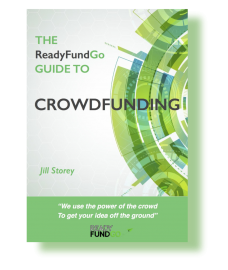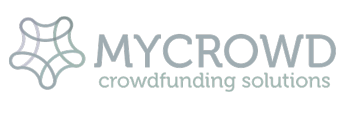5 Key Tips
Small businesses need to be actively marketing on Facebook. That’s the long and the short of it. Clients often ask – slightly wary tone in their voice – if they need to be on Facebook. My answer usually boils down to this: Facebook has 1.9billion users. Your customers are there – and you should be too. The question then is not whether you should be on it, but what you should do once you’re there. Growing your Facebook page – both the number of people who ‘like’ it, and those who engage with it – should be a fundamental part of your marketing strategy, and like the other elements of it, should be approached strategically and methodically. This article will look at how to go about doing just that.
Step 1: Tell Everyone
This is not the time to be shy. Tell everyone you know about your page – give them a clear instruction: to like your page. You want your friends, colleagues and contacts to take the positive action of visiting your Facebook page and clicking the ‘Like’ button. These people – the people you already know – will form the base of your Facebook page – they are the people most likely (currently) to act as evangelists for your products or services and you need to leverage that.
- write a public announcement post. Explain what your page is, what you’re trying to do with it, and that you’re asking them to like it.
- invite your friends. You can do this straight from your Facebook page – but you should also email people, send individual invite messages, and generally hassle your friends to do what you’re asking! (You might want to slightly segment your Facebook friends for this purpose – if you’re anything like me, you’ve a couple of hundred Facebook friends, but only a couple of dozen that are really close. It’s okay to hassle your best friends – this isn’t something you’re going to do every day; but always be courteous and grateful!)
Step 2: Strategic Management of your Facebook Page
Your Facebook for small business page is only going to grow – is only going to be useful to your fans – if you’re sharing genuinely useful content with them.
Value. Every time you’re adding content to that page, you should be providing value. The focus is on your readers not on you, and so with every item you put there think of your users: is your post answering a common question, is your post solving a common problem, what other value could your post provide?
Consistency. And it’s not enough to do it once … this is something you need to do again and again. So, what processes do you have in place for finding useful content for your fans, and what tools do you want to use to help facilitate this process? I have three principle ways in which I source, curate and distribute content socially:
i) To find relevant content I subscribe (via RSS) to a number of blogs that share a target market with mine. Daily, I receive maybe 20 – 30 links to articles which should then be beneficial to my readership.
ii) I also follow a number of people on Twitter who consistently produce, or link to, content that my target market would be interested in. I have these people stored in a private Twitter list, so their posts are easily identifiable in my Twitter client.
Mix it up. Yes, consistency is important – consistently providing value. But don’t be dull. You can mix it up – sometimes post a link, others an image, maybe a video. Keeping it interesting will help you gauge what types of content engage your visitors the most – which they find most useful, which they are more likely to comment on, and which they’re most likely to ignore.
Using this information to influence your ongoing activity on Facebook is all part of being strategic: understanding what works, what doesn’t, and reacting accordingly.
Step 3. Facebook Ads
Advertising your page using Facebook Ads is the surest way to add new fans. It’s cheap (a minimum spend of $10 per day, currently), it’s targeted (there’s a great range of demographic criteria you can target your ad by), and it works. In essence, you’re advertising your page to a select section of Facebook’s 1.19billion users. A slice that should be most interested in your services.
But, just like in the offline world, your ad will remain ineffective if you don’t offer a compelling reason for people to take the action you’d like them to. Incentivise with a compelling, original, offer: can you offer a free e-book, a half hour consult for free, entrance into an exclusive weekly draw, whatever it is – if you can offer something compelling, something a user cannot get elsewhere, you will generate far more fans than otherwise.
Step 4. Integration with your Website
Do not separate your Facebook strategy from your website strategy. The two should be tightly integrated. When I write for my blog (or other blogs), I’m generating content that could be shared on my Facebook page – so that will boost traffic back to my website. When I’m sharing shorter pieces of content on my Facebook page, together they might form the basis of a post for my blog. The articles in my Buffer may well serve as a framework for future, longer form, content on my blog.
My blog gets more traffic than my Facebook page – and then drives people to my Facebook page. Each blog post has a ‘like’ button, the sidebar on each page has links through to my Facebook page. The aim is to decrease the ‘distance’ between the content on my website, and sharing on Facebook.
Step 5. Keep on Keeping on
… and don’t stop. Once you have processes in place, it is important to keep going. Your efforts are focused on two key areas: fan growth, and fan engagement. For fan growth, keep looking at the Facebook ads, contests, website integration … for fan engagement you’ll want to understand the impact of your content better – Facebook insights give you information on the reach and engagement of your posts, and you should mix up the content you share accordingly.
The important thing is to keep on analysing, to keep on trying new things – new offers, new incentives, new content and new ways of sharing.
Facebook is a great way to extend your brands reach – and a great way to offer value to your fans and customers; if you’re not using it to it’s fullest, just remember this: 1.19billion people. That’s all.
Read more at http://www.business2community.com/facebook/5-tips-grow-facebook-business-page-0740112#RWTqc6MA6lyGRDYu.99 First Published by David Horn



